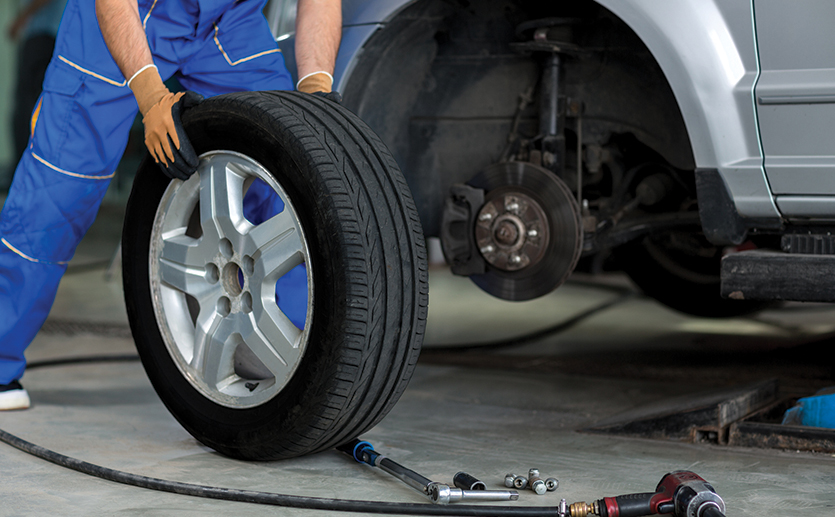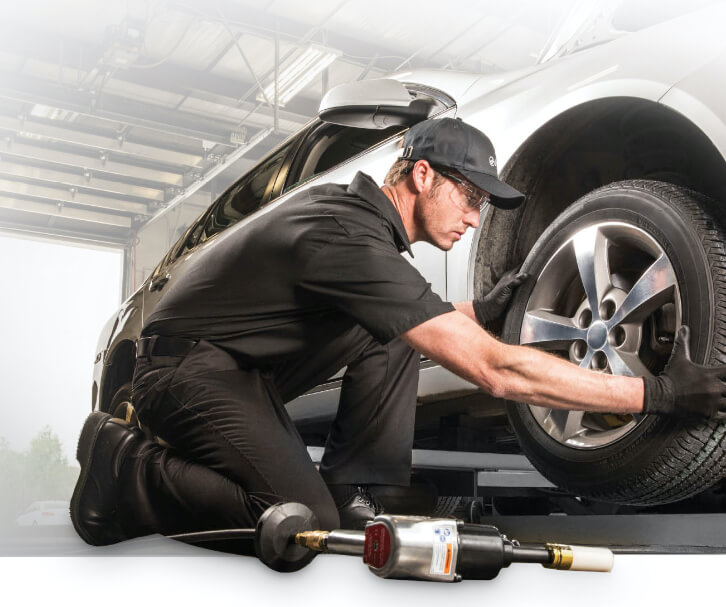Morris Tires: Your Destination for GMC Tires Service Quality
Morris Tires: Your Destination for GMC Tires Service Quality
Blog Article
Tire Solution: The Influence of Weather Conditions
When it pertains to ensuring ideal efficiency and safety on the road, comprehending the impact of weather on tire service is essential. From scorching warmth to icy roads, each weather condition aspect can dramatically affect tire capability and total driving experience. By diving right into the results of differing climate conditions on tires, chauffeurs can acquire beneficial insights that may enhance their car's performance and durability. In this discussion, we will certainly check out the intricate connection between climate condition and tire service, clarifying the significance of weather-specific tire maintenance methods and considerations.
Warm and Tire Performance
When revealed to high temperature levels, tires experience adjustments in performance that can substantially influence lorry security and handling. The heat generated from extended driving or hot climate conditions causes the tire rubber to soften, leading to reduced tread life and increased wear.

Winter Effects
Cold climate conditions can have a substantial impact on tire performance and safety and security. In chilly weather, tires may also shed air pressure more quickly, which can impact taking care of and gas effectiveness.
To minimize the effects of cold weather on tires, it is critical to consistently check tire pressure and inflate them to the manufacturer's recommended degrees. Using winter months or all-season tires developed for winter conditions can also improve grip and grasp on icy or snowy roadways. Appropriate tire upkeep, including normal assessments for wear and damage, becomes a lot more critical during cooler months to make certain ideal efficiency and safety.
Rainy Issues Effect
Tires with damaged footsteps are much more susceptible to hydroplaning, where a layer of water builds up in between the tire and the roadway surface area, leading to loss of traction. To battle this, vehicle drivers must frequently evaluate their tires for sufficient walk depth and think about investing in tires especially created for wet conditions.
Moreover, wet weather condition can also reduce exposure, making it testing for motorists to see the road in advance plainly (GMC Tire Service). In such conditions, it is necessary to change driving rates accordingly and keep a secure complying with range to enable for abrupt stops. Effectively inflated tires can also help in maintaining control on wet roads by providing much better handling and grasp
Snow and Tire Safety
Snow-covered roads present unique obstacles for vehicle drivers, stressing the importance of proper tire choice and upkeep. When driving in snowy conditions, having the ideal tires can make a substantial distinction in safety and performance. Winter months tires are designed with special rubber compounds and walk patterns to provide better grip on snow and ice contrasted to all-season tires. The deeper footsteps and sipes of winter tires assist grasp the roadway much better, minimizing the danger of gliding and slipping.

Furthermore, drivers need to think about installing tire chains in severe snowy problems. Tire chains provide added read here traction by clutching the snow and ice, boosting stability and control. Nonetheless, it is important to comply with supplier instructions when setting up and making use of tire chains to avoid damage to the tires and automobile. By selecting the ideal tires, keeping appropriate inflation, and thinking about added traction help like tire chains, chauffeurs can boost their safety and security when browsing snow-covered roads.
Weather-Related Tire Upkeep
When encountered with different weather, appropriate tire upkeep ends Source up being an essential aspect of lorry safety and efficiency. Weather-related tire maintenance incorporates a series of methods targeted at making certain optimal tire function and longevity in various climate circumstances. One essential aspect of weather-related tire maintenance is tire pressure law. Changing temperatures can cause tire pressure to vary, affecting grip and fuel efficiency. Consistently checking and readjusting tire pressure according to producer referrals is vital for risk-free driving in changing weather. Additionally, tire step deepness plays a significant role in managing various climate elements. Tires with appropriate step deepness supply much better hold on damp or icy roads, lowering the threat of hydroplaning or skidding. When step wear reaches a certain deepness is crucial for preserving grip and security in adverse weather, inspecting tire walk routinely and replacing tires. By prioritizing weather-related tire maintenance, drivers can enhance security, enhance vehicle performance, and prolong the lifespan of their tires.
Final Thought
In verdict, climate conditions have a significant impact on tire efficiency and safety. From warm influencing tire stress and use to cool weather condition decreasing traction, it is essential to consider the weather when keeping and using tires.
In this conversation, we will discover the detailed relationship between weather conditions and tire service, losing light on the relevance of weather-specific tire maintenance methods and considerations.

Report this page